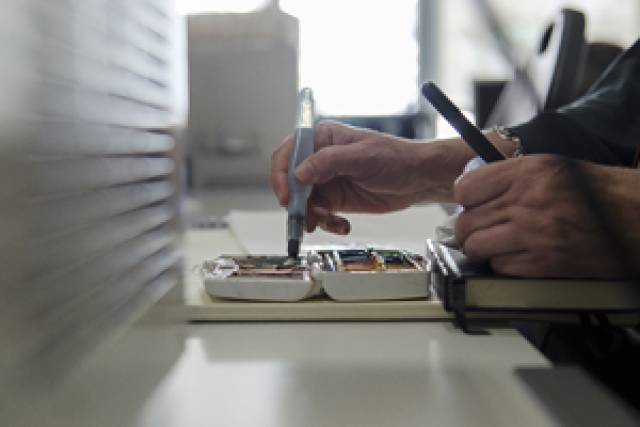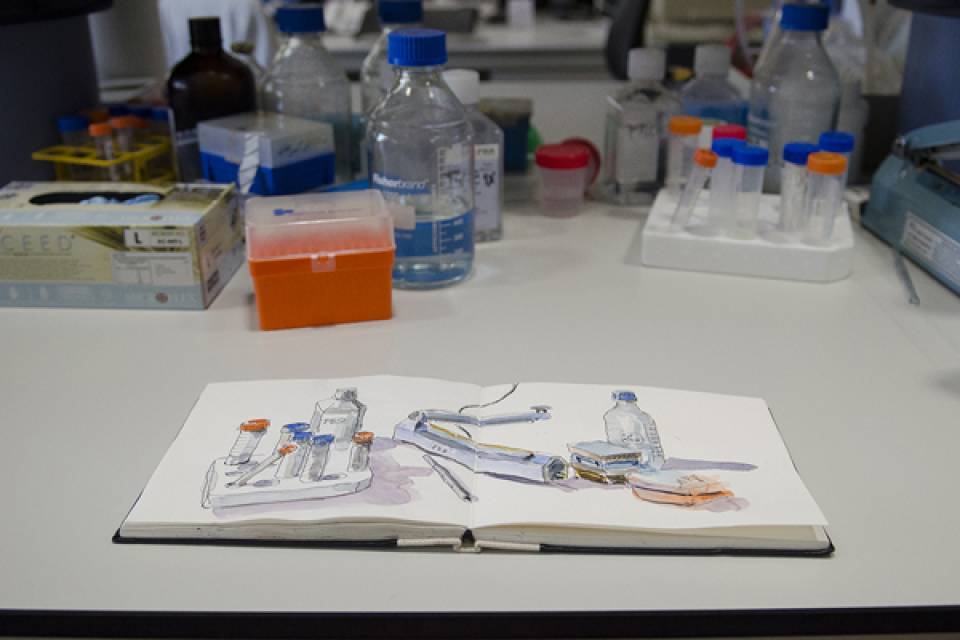The registered participants in the workshop in scientific sketching arrived at the Centre Cívic Urgell of Barcelona at 10:00 a.m. The hall of the civic center became the meeting point of the drawers with the five professional Sketchers who taught the workshop: Swasky, Lapin, Sagar Forníes, Santi Sallés and Lluïsot. These renowned illustrators who, together with the artist Cristina Curto, drew the IDIBAPS last May, were commissioned to accompany participants and give them advice from their own experience.

Drawing a laboratory
At 11:30 a.m. started the workshop: the groups accompanied by researchers and tutor-Sketchers were distributed through the different floors of CEK. The first objective was to familiarize drawers with the environment, discovering them what a biomedical research laboratory is and, in order to achieve this, the researchers showed the different spaces and introduced them to the research carried out daily. Before starting drawing, the professional Sketchers gave some advice about the best way to express what they were seeing and how to reproduce a space that they were not used to illustrate. Gradually, the hundred participants began to wander through the laboratories, to look here and there... They took their tools of their bags and began to make the first outlines of what most attracted their attention -a microscope, bottles, a pipette. All in the greatest and most respectful of the silences and with the maximum concentration in order to interpret and reproduce on paper what was in front of them.
Drawing an experiment

When they were done, towards 13:30, everyonere convened at Beatriu de Pinós Square, the interior courtyard behind the CEK, to exchange views and share their work and the lived experience. Participants highlighted the peaceful tranquility they had to draw and the contrast between the relaxed atmosphere of the laboratories and the street, where almost they always perform other sketching workshops. Thus, the day served to bring to society the research carried out in a translational research center like IDIBAPS through the urban drawing.
This initiative promoted by the IDIBAPS has been possible thanks to the collaboration of Zahorí de Ideas- Drawing on Location School, Centre Cívic Urgell and Casa Piera, and the support of FECYT. With the aim of reaching to the greatest number of people possible, the book Sketching Cientific IDIBAPS has been published under a Creative Commons license. Help us to spread it! www.idibaps.org/sketching/the-book.pdf
More information about the project at the IDIBAPS Channel in YouTube and in the article: "Art and science meet in the book Sketching científic IDIBAPS".

